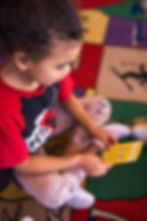MINDFUL EDUCATION IN SCHOOLS
Happy Hearts.
Healthy Minds.
The Mindful Education in Schools program is Challenge to Change’s signature evidence-based yoga and mindfulness program customized to Preschool, Elementary, Middle School, and High School levels.



Programs for your level of education:
Mindful Education in Schools provides trauma-informed, age-appropriate yoga and mindfulness practices to support social-emotional development and promote preventative wellness in classrooms, schools, and learning communities.
Available in live, licensing, or digital formats, the Mindful Education in Schools signature 5 Parts of Practice are expertly delivered by a Challenge to Change, Inc. Mindful Education in Schools Instructor.
Mindful Education in Schools is designed to:
Reduce the effects of bullying
Enhance focus in children with ADHD and reduce attention problems
Assist in the regulation of emotions to reduce emotional distress and conduct problems
Strengthen student resilience in order to positively impact stress management, self-esteem and decision-making
Mindful Education in Schools supports the CASEL competencies, Iowa SEL competencies, and the Six Seconds Know Choose and Give framework.
BACKED BY RESEARCH
With evidence-based research, yoga, and mindfulness practices, Mindful Education in Schools programming gives everyone the mindset and skills needed to lead a fulfilling life.
Evidence-Powered Mind + Body
TEACHER EXPERIENCE
96%
Enriched Their Teaching Experience
STUDENT ACADEMICS
97%
Tools That Increase Students' Academic Success
CLASSROOM MANAGEMENT
100%
Satisfaction with the Guidance and Support Received
Emotional Benefits
Social Benefits
Physical Benefits
Intellectual Benefits
CHOOSE THE RIGHT PROGRAM FOR YOUR SCHOOL:
Ready to purchase Yoga in the Schools?
Talk to our team.

License
Your Staff
Your staff members, trained in our curriculum, offering programming to your facility.
PRICE
$1,200 per school
Includes 8 digital lessons and 3 digital in-services.

Live
In-Person
Our trained yoga instructors come to your school or organization.
PRICE
$425 per classroom
Includes 8 digital lessons and 3 digital in-services.
Convenient & straightforward curriculum options.
PROGRAM OPTIONS
The Mindful Edcation in Schools curriculum is offered in three convenient options to bring the benefits of yoga and mindfulness to your school or organization.
What’s included in our program:
